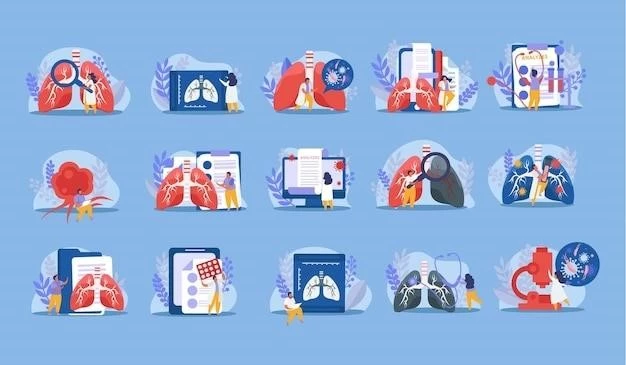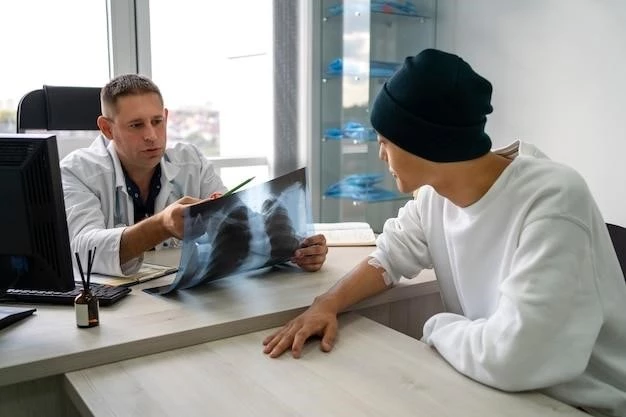Causes of Bronchogenic Cyst
Understanding the causes is crucial․ Seek medical advice for tailored information on your condition․
Development during Embryonic Stage
During embryonic development, anomalies may occur leading to bronchogenic cyst formation․ Consult with a healthcare provider for personalized guidance and treatment options․
Genetic Factors
Genetic predisposition can play a role in the development of bronchogenic cysts․ Discuss your family medical history with a healthcare professional for a comprehensive evaluation and management plan tailored to your needs․
Symptoms and Diagnosis of Bronchogenic Cyst
Recognizing symptoms early is key․ Promptly consult a healthcare provider for accurate diagnosis and management․
Respiratory Symptoms
Common respiratory symptoms include cough, chest pain, and shortness of breath․ If experiencing these, seek prompt medical evaluation to determine the underlying cause and appropriate treatment․
Diagnostic Tests
To diagnose a bronchogenic cyst, tests like chest X-rays, CT scans, and bronchoscopy may be performed․ Follow your healthcare provider’s recommendations for accurate diagnosis and appropriate treatment planning․
Imaging Studies
Imaging studies such as MRI or ultrasound can provide detailed information on the bronchogenic cyst’s location and size․ Follow-up with your healthcare provider for a comprehensive evaluation and treatment plan based on the results․
Treatment Options for Bronchogenic Cyst
Explore treatment choices personalized to your condition with the guidance of a healthcare professional․
Observation and Monitoring
Regular monitoring is essential to track the cyst’s growth and assess symptoms․ Consult your healthcare provider for a tailored observation plan and necessary follow-up appointments to ensure stability and determine if further treatment is needed․
Medication Management
Medication may be used to manage symptoms like pain or discomfort associated with bronchogenic cysts․ Follow your healthcare provider’s guidance on the appropriate medications and their potential side effects․ Be sure to adhere to the prescribed regimen and report any concerning symptoms promptly․
Surgical Intervention
Surgical removal of the bronchogenic cyst may be recommended for symptomatic or larger cysts․ Discuss with your healthcare provider the risks, benefits, and potential outcomes of the surgical procedure․ Follow pre-operative and post-operative instructions diligently to ensure optimal recovery and minimize complications․
Complications Associated with Bronchogenic Cyst
Understanding potential complications is vital․ Consult a healthcare provider for comprehensive guidance․
Infection
Be vigilant for signs of infection such as fever or increased pain․ Promptly seek medical attention if any concerning symptoms arise to prevent complications․ Adhere to prescribed treatments and follow-up appointments for optimal recovery․
Airway Obstruction
Watch for symptoms like breathing difficulties or persistent cough․ Quick medical intervention is essential to address potential airway obstructions․ Follow your healthcare provider’s guidance for appropriate management and to prevent complications․
Surgical Management of Bronchogenic Cyst
Consider surgical options under guidance of a healthcare provider for individualized treatment․
Thoracoscopic Surgery
Thoracoscopic surgery is a minimally invasive approach for bronchogenic cyst removal․ Consult with a specialist to discuss if this technique is suitable for your condition․ Follow pre-operative and post-operative instructions diligently for a successful recovery․
Open Chest Surgery
Open chest surgery may be necessary for complex bronchogenic cyst cases․ It’s crucial to discuss the procedure, risks, and recovery expectations with a healthcare provider․ Follow all pre-operative and post-operative care instructions meticulously for optimal outcomes and healing․
Prognosis and Long-term Outlook for Bronchogenic Cyst
A positive prognosis is achievable with proper treatment and follow-up care․ Regular monitoring is essential for long-term well-being․
Recurrence Rates
Recurrence of bronchogenic cysts after treatment is rare but possible․ Follow-up appointments are crucial to monitor any signs of recurrence․ Stay proactive with your healthcare provider to address any recurrence promptly for optimal management․
Follow-up Care
Regular follow-up care is essential post-treatment to monitor recovery and address any new symptoms․ Adhere to scheduled appointments and communicate any concerns promptly with your healthcare provider for ongoing support and maintenance of your health․

Research Advances in Bronchogenic Cyst
Stay informed about the latest research findings by consulting with medical professionals and reputable sources․
Molecular Studies
Advancements in molecular studies are enhancing our understanding of bronchogenic cysts․ Keep abreast of these developments through reputable medical sources and consider discussing potential molecular-based treatments with your healthcare provider for personalized care․
Novel Treatment Approaches
Emerging novel treatment approaches for bronchogenic cysts are being researched․ Stay informed about these innovative methods by consulting with specialists and staying up-to-date with medical literature․ Engage with your healthcare provider to explore potential novel treatments tailored to your individual needs and condition․
Lifestyle Modifications for Bronchogenic Cyst
Adopting healthy habits can support overall well-being․ Consult healthcare providers for personalized lifestyle recommendations․
Smoking Cessation
Quitting smoking is crucial for lung health․ Seek support from healthcare professionals or cessation programs to begin your journey towards a smoke-free life․ Your overall health and respiratory system will benefit from this positive lifestyle change․
Regular Exercise Routine
Incorporating regular exercise can improve lung function and overall health․ Consult with healthcare providers to establish an exercise plan suitable for your condition․ Consistent physical activity can enhance your well-being and support your respiratory system․
